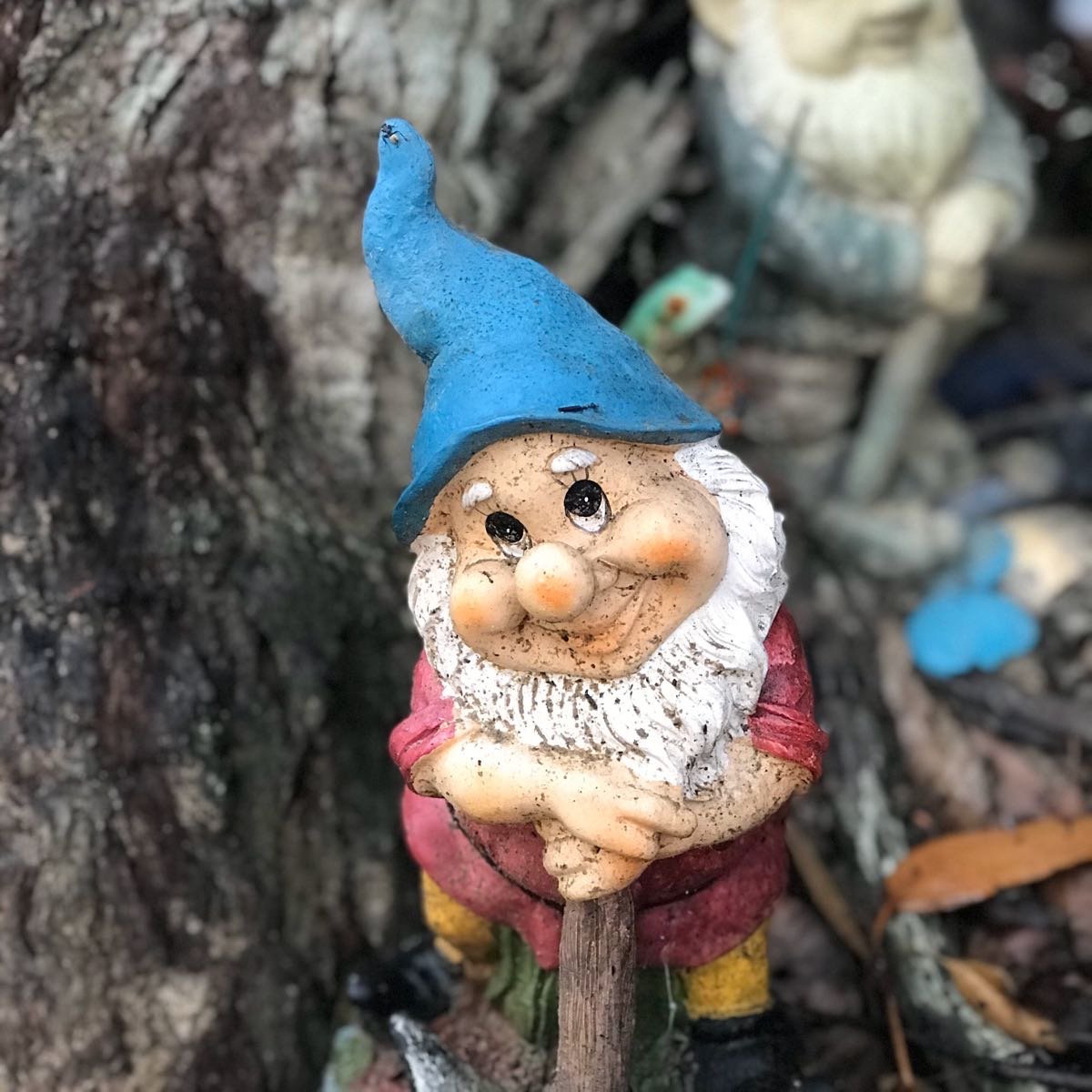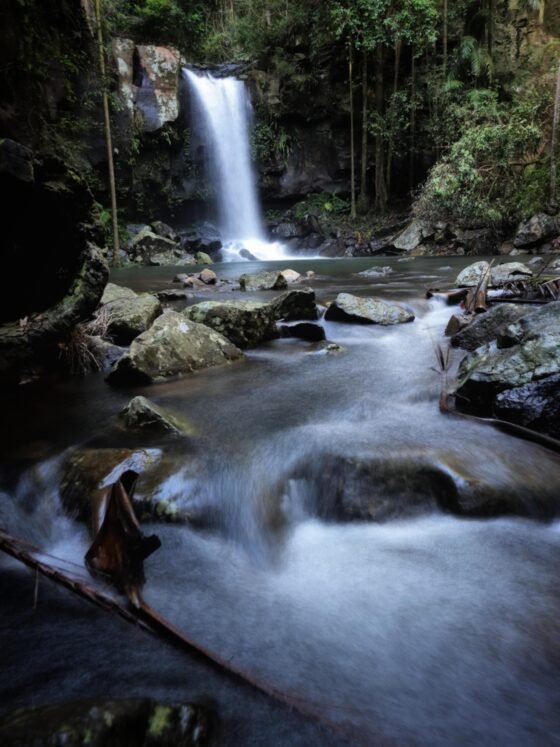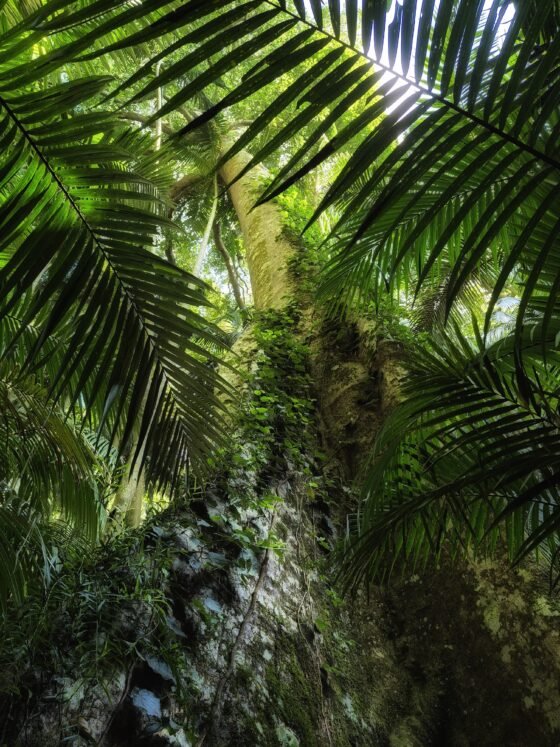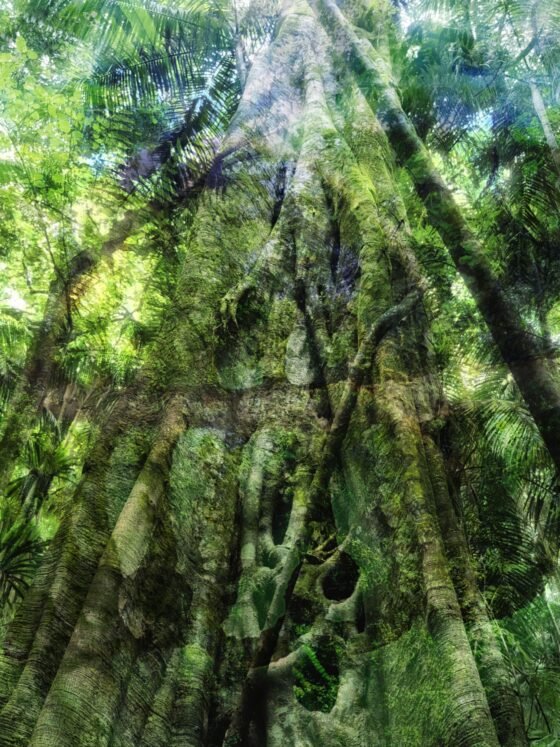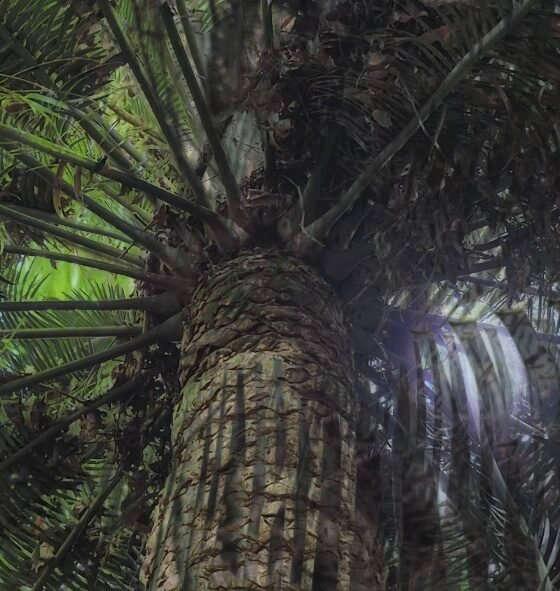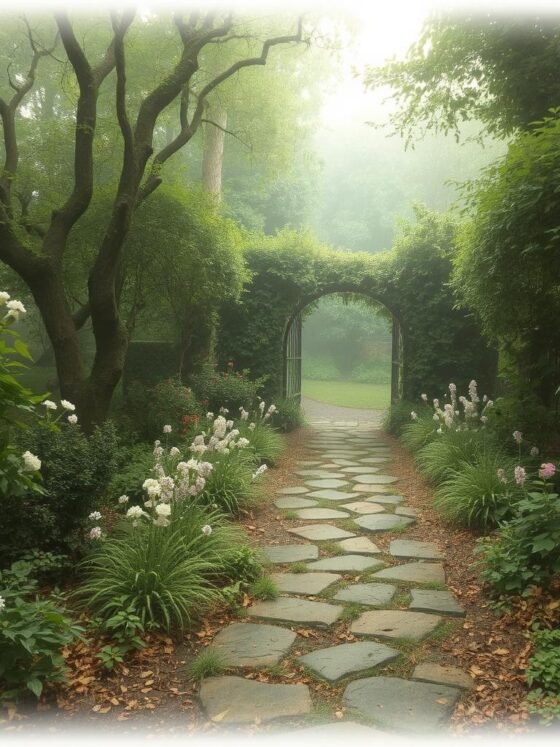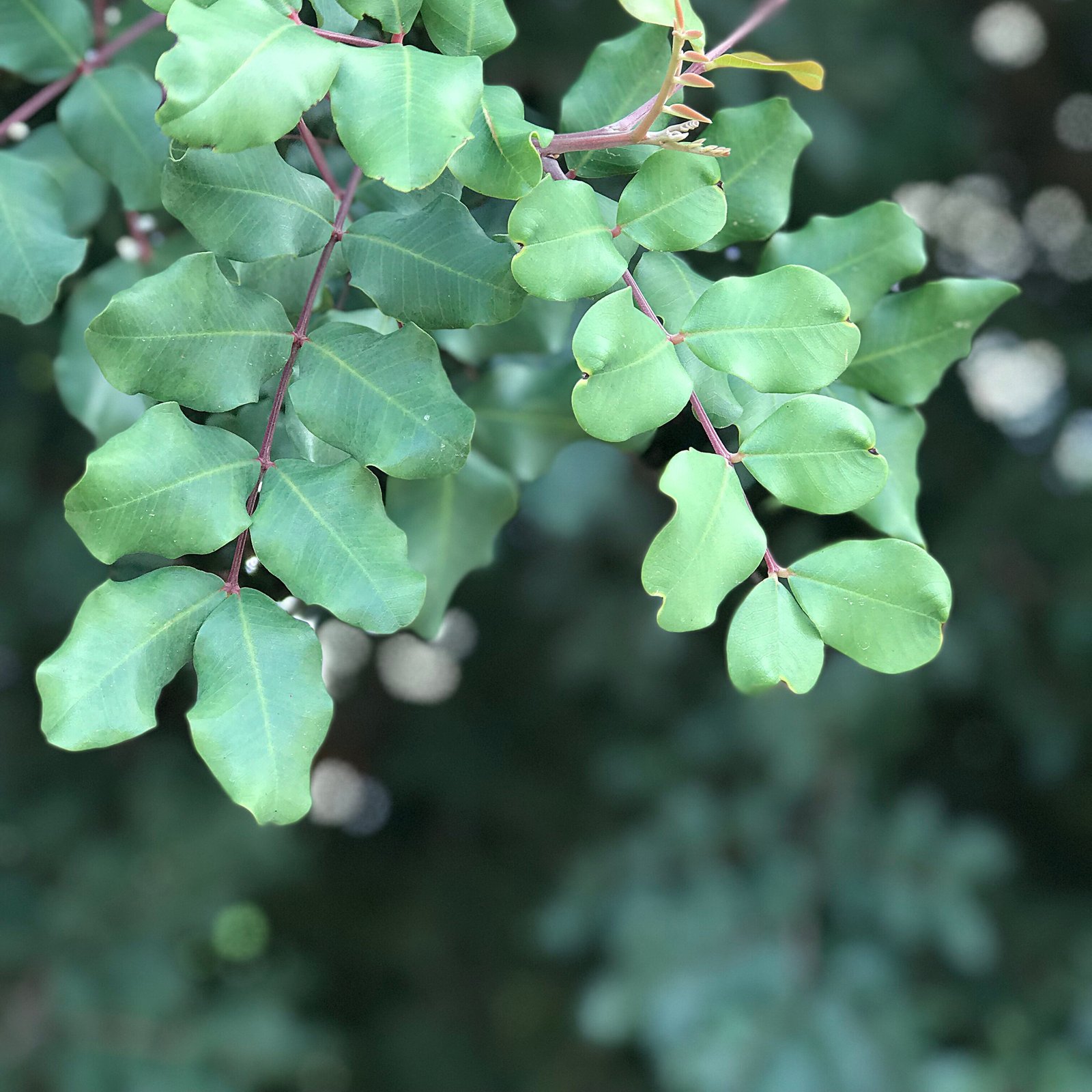Snaislands: Hidden Islands of Hope, Healing & Longevity

Snaislands: Snail islands. Lost worlds awaiting discovery. Islands of slowness, where time stands still, in a slip stream of frantic change. Snaislands are metaphorical refuges where we can find sanctuary, slow down and allow healing to occur. They are secret hidden places where our soul can rest, our bodies can recover and rejuvenate, and where the secret to a long and healthy life may lay.
Snails are incredible creatures! Such a strong and passionate statement to make about such a humble and quietly unassuming creature you may say. Follow me as I take you on a slow journey of discovery and to why snails can hold keys to our future health, happiness and longevity.

The Mysterious Island of Snails
I have always had a fascination with the endemic land snails in Malta after reading a nature journal article on Maltese land snails in my late teens. I read about a tiny little conical land snail that was only found on the islet of Filfla. It intrigued me.
Filfla is now a nature sanctuary, but at one time it was used as target practice by the British. Little did they know, or dare I say, care that some very special, unique and rare wildlife eeked out their existence on this rocky seemingly inhospitable islet. With an area of just 6 hectares, this crumbling flat-topped limestone plateaued island, surrounded by 60 metre high cliffs is like a tepui (flat-topped table mountains in South America) thrusting itself out of the deep blue Mediterranean Sea.
Peering out to Filfla from the cliffs at Dingli on mainland Malta, this tiny island always fascinated me and held onto an air of mystery. It always felt so close yet so out of reach. What other secrets did it conceal…
The Snaildventure Begins
The scientific name of this tiny land snail is Lampedusa gattoi. It is a subspecies of the of the mainland species Lampedusa imitatrix. At between 13-19mm long, it is small. It has a whitish cream shell that is finely ribbed with 8-10 whorls.
Surveys made in the early 1990’s found the entire population of snails were limited to an area of 10m2 on this tiny islet. [1]
At such a minuscule distribution area it indicates just how sensitive and specialised snails can be and how habitat disturbance in such a small area can easily wipe out an entire species.
Lampedusa Dreaming
What fascinated me more about this snail was its scientific name. It’s suffix refers to the person who named it, who’s surname was Gatt. The prefix, Lampedusa is the part that intrigued me…
As a teenager I was curious that there must be a connection of this tiny snail with the remote Mediterranean island of Lampedusa. At some time in the distant past I believed that there must have been some land bridge or connection between Filfla and Lampedusa.
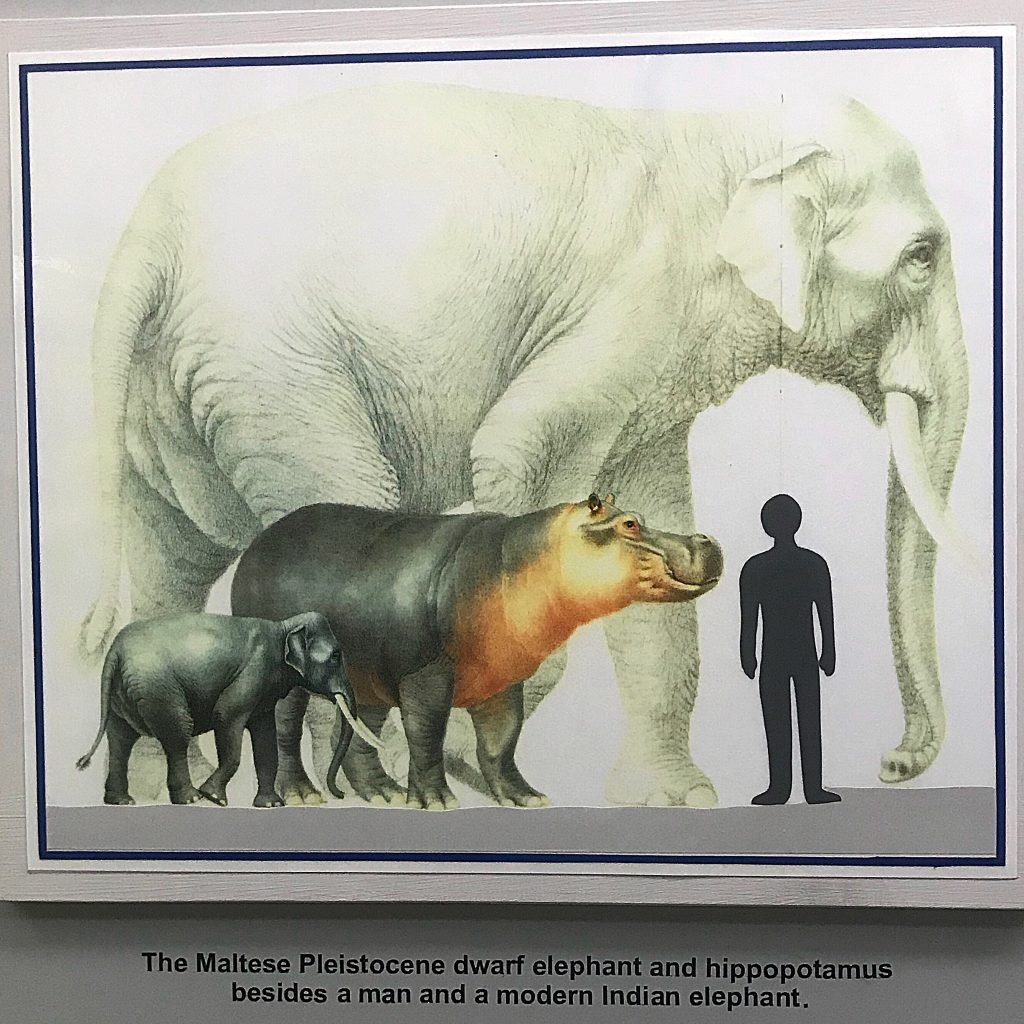
Connection
Intrigued I learned that at one time the Mediterranean Sea was an enormous dry basin or valley stretching from Gibraltar all the way to the Levant coast.
At some point in the past, the waters of the Atlantic Ocean burst through creating the Straits of Gibraltar, and separating Europe and Africa by water flooding into the basin. In time, the mountaintops became smaller and smaller islands surrounded by sea. As the waters rose and lapped against the sides of these mountain tops cum islands, animals retreated to higher ground.

Cave of Enlightenment
Ghar Dalam, which in Maltese means ‘cave of darkness’ is a place where bones of dwarf elephants and hippopotami have been discovered.
The theory is that as the isolated animals retreated to higher ground they evolved to become smaller to ensure that they didn’t outstrip their new island natural resources. I visited Ghar Dalam while in Malta and saw skeletons and bones of these extinct miniature animals.

Lampexpedition
When I was 21 I decided to go backpacking with a cousin. We left Australia and toured Southeast Asia before heading off to the land of our ancestors, Malta. From here I decided to go an adventure and travel to the remote Mediterranean island of Lampedusa. We boarded a ship to Sicily and then we went overland to Port Empedocle before catching an overnight ship to Lampedusa passing the volcanic island of Linosa along the way.
Arriving on this island, a long sliver of limestone rock with little vegetation and surrounded by limpid aqua waters, I found it to be very similar to Malta. The island population 25 years ago was around 5,000 people. It swelled in the holiday season to accomodate 5,000 sun-loving tourists from Northern Europe.
In between exploring the tiny island with its stunning coastline of high cliffs and private coves, and the light coloured limestone peppered with a sprinkling of Mediterranean herbs and wildflowers, I was looking for land snails. I found them sleeping away the heat of the summer in the rocky rubble, stony crevices and the shade of the base of dried up plants.
Opening The Door
These tiny little snails looked just like the Filfla land snails that I had discovered in the nature journal that had inspired this journey!
These type of conical land snails are know commonly as ‘door snails’. The door had been opened and my curiosity was satiated for the time being. It would take another couple of trips to Malta while exploring Europe to continue my fascination with Malta’s land snails.
Snail Islands
Many species of land snails in Malta just like the island’s miniature rhinoceros and elephants, are small.
These small creatures often live in very specialised habitats. You could say that they live on islands upon islands. There are about 62 species of land gastropods, or snails and slugs in the Maltese Islands.

Calcerophiles
Because of their shell some Maltese snails require a specific environment that is calcareous, or rich in calcium. Snail diversity increases with a calcium rich environment and a moist climate. The Maltese Islands are primarily made of calcium rich limestone, yet with development, farming practices and even bird trapping is having a devastating effect on these tiny snail islands. Living on areas of karstland often bordering cliffs or limestone outcrops they are sensitive to human activities.
Smothering their rocky habitats with soil as in the case of agriculture obliterates their habitat. Illegal bird trapping sites are set up all over Malta inland and along the coastline. The trapper often levels out the ground, using soil, destroying the garigue plant community they feed upon and fills in the moist cool shady rocky crevices that snails need to shelter from the heat and direct sun. These snails are often so small and seemingly insignificant that most people overlook them.

Limited Distribution
The limited distribution of snails due to their specific habitat requirements makes them very vulnerable to change and can lead to extinctions.
Some snail species are so restricted and found nowhere else in the world, like door snail Lampedusa gattoi on the islet of Filfla. Lampedusa melitensis, closely related to Lampedusa gattoi, live in just tens of square metres on a few boulders and rock scree at the base of a cliff in south-west Malta. [2]

Limestone hills can be great treasure troves of snail biodiversity.
A case in point is the tiny, beautiful snail Plectostoma sciaphilum, which was found on only a single limestone hill at Bukit Panching, Pahang, in Peninsular Malaysia. It went extinct in the mid 2000s when a cement company quarried the hill for limestone. Several other species of Plectostoma snails are referred to as ‘microjewels’ for their exquisitely detailed shells. Many of these to are spiraling towards extinction because of quarrying of limestone hills. [3]
There are other examples of snail extinctions on limestone hills in Malaysia. These specialised species confined to very small areas and because of their small size are often little known, or undiscovered and can easily be wiped out before they are known to science. Some limestone hills may contain 50 to 100 species according to Jaap Vermeulen, a Dutch naturalist and an expert in limestone biodiversity. [3]

House of the Gods
In ancient cultures the world over mountains have been seen as the abode of the gods. From the ziggurats of Ur in ancient Sumeria to the Aztec ziggurats in Central America, cultures living in flat lands would create human-made mountains for their Gods.
In the Guiana Highlands of South America lay mist covered table topped mountains or mesas known as tepuis. These tepuis remind me of the islet of Filfla and hills in Malta and Gozo. In the native tongue of the Pemon, the indigenous people who inhabit the area surrounding the tepuis in Gran Sabana, the word tepui means ‘house of gods’.
Tepuis are often not part of a mountain range but are isolated landforms. This means that they have become islands of biodiversity hosting a unique array of endemic plant and animal species. Scientists and researchers often find an array of new species that have yet to be described as these ‘islands above the rainforest’ hold many secrets.
The Lost World
A report on Roriama Tepui by the noted South American researcher Robert Schomburgk, inspired the Scottish author Arthur Conan Doyle to write his novel The Lost World, about the discovery of a living prehistoric world. [4]
Hidden Gods
Malta’s tepuis too harbour a lost world. These limestone islands contain biological gems that contain scientific mysteries to do with ageing that we are only beginning to uncover. Snails in their limestone towering islands are gods of immortality and healing. These tiny seemingly insignificant creatures are gems that may hold the secrets to immortality. Within the palm of our hand, tiny little creatures may hold the answers to the fountain of youth.

Ancient Symbolism
In ancient cultures snails were often associated with the cycle of life, death, and rebirth. Their spiral shells represented the rotation of the Earth around The Sun, the seasons, the universe and time itself. [5]
The ancient megalithic temples of Hagar Qim and Mnajdra on the cliffs overlooking the islet of Filfla contain spirals carved into stone. The temples are aligned with the seasons to coincide with the solstices.
The prehistoric temples throughout Malta and Gozo that existed over 5000 years ago give clear evidence that there had existed a high-developed matriarchal culture that worshipped nature and fertility.

The snail to the ancient Aztecs saw as a sacred being – its shell representing the cycle of life. The lunar deity, Tecciztecatl is often seen carrying a snail shell on his back. Aztecs associated the snail with the moon and just as the snail retreats into the shell, the moon retreats into the depths of the ocean. [5]
Quetzalcoatl is another Aztec god closely associated with the sacred snail. He wore the spiral shell as a symbol on his chest, and therefore knew the secrets of reincarnation and the cycles of the Universe and of the gods. [5]
Snails and Immortality
Snails are indeed sacred. They may prove some day to hold the secrets to immortality. But before I discuss the link between snails and immortality let us dig a little deeper into the prehistoric culture of Malta.

Sleeping Goddess
Large female figures symbolising growth and fertility figure prominently in the prehistoric cultures of Malta. One such sleeping figure in the subterranean temple of Hal Saflieni was found amongst the bones of 7,000 people. The sleeping goddess represents the aspect of death which in matriarchal religion was directly related to rebirth. Correspondingly, in Greek mythology the god of sleep, Morpheus, was the brother of the god of death. [6]
Snails are in fact sleeping goddesses. They can slow down their metabolism during difficult times of the year and go into a sleep. Those in cold climates can hibernate. Those in Malta, during the hot summer months climb on the stems of dried plants or find cool shady crevices and aestivate. Aestevation is a state of dormancy characterised by inactivity and lowered metabolic rate, that is entered in response to high temperatures and arid conditions.

Sleeping Beauty
This is where it gets really interesting. In this sleeping state, snails are able to slow down the effect of free radicals. Just like sleeping beauty, snails can while they are sleeping dramatically slow down the ageing process.
A scientist in Queensland is researching the genes that slow down the ageing process in snails. Dr Scott Cummins, a molecular biologist at the University of the Sunshine Coast, said because of aestivation some snails could live up to seven times longer. In other words they could live from three years to 23 years – being the equivalent of humans prolonging life from 70 to almost 500 years. [7]
A discovery could theoretically lead to ways of slowing down human ageing or even halting life in a state of “suspended animation”. It may also lead to extending the shelf life of transplant organs and help with age-related diseases like Alzheimer’s. [7]

Lazarus Experiment
Back when I was 21 and tramping through Europe with my backpack before leaving Malta I had collected a few tiny Maltese land snails. I had travelled around for 11 months and forgot they were in my luggage.
I decided to work for a few months in the UK and unpacking my bag I discovered that the snail shells were still in my bag. I examined them closely and realised I had inadvertently brought along sleeping stowaways – there were sealed shells.
Thinking after so long they surely must be dead curiosity got the better of me and I set up a little terrarium. It was winter and I kept the terrarium indoors. I placed the little snail shells in the terrarium and proceeded to sprinkle water to simulate rain. Miraculously, these sleeping goddesses awoke from their slumber within minutes. I was astonished!
I am excited to think what more secrets will snails reveal to humans.

The Valley of Hope
While visiting the Kapella ta’ Esperanza, a beautiful church on the edge of the Valley of Hope in he mMaltese town of Mosta, I wandered down the stairs and into the valley. I have mentioned in my previous blog the miracle of the shepherd girl, yet to me discovering a small colony of tiny land snails was in itself a tiny miracle. This little group of snails were clustered in a tiny indentation filled with water on a limestone boulder. It was Autumn, so no doubt after some recent rains they weren’t aestivating.
I delicately picked up one of these tiny snails and in a few moments it had emerged out of its shell. I placed it down again and I was captivated by its slow sliding journey traversing just centimetres. It was quite miraculous to me, so used to my common garden variety snail in my backyard back in Australia, to see this tiny snail silently moving on its silver trail. To me this was every bit as miraculous as the shepherd girl who was concealed from harm by the gossamer thread of a spider’s web. Esperanza means hope, and snails symbolise hope.
Slowing Down
In those moments mesmerised by this tiny snail I realised the importance of slowing down. By slowing down I was able to take in the little things, the intricate details of this very moment. Snails are about time. About having patience. They are about allowing. About allowing time at its own pace to reveal the secret wonders of life.

Restivate
By slowing down we can allow the snail goddess to emerge. To wake us from our subconscious frantic cerebral slumber to experience the beauty and sensuality of now. She teaches us to restivate. To factor in time to go deeply into our shell, so that we can nurture ourselves and come out refreshed, revitalised, rejuvenated. Through slowing down and allowing more rest we can help keep healthy and youthful.

Snailsuality
Snails are sensual. They are tactile creatures and can teach us to better connect to our snailsuality. Snails can help draw us out of our shells or minds and into our body. They can teach us about touch. A snail has only one ‘foot’. It fully embraces every surface that it comes in contact with and with its mucous it silently smoothly glides past. It is a slow silent sensual movement.
I placed the little snail that I had awaken on my hand and felt its tiny cold body slide on the palm of my hand. Snails can teach us to connect to the pleasures of our bodies. To walk barefoot, feet connected to the earth. To sit in the warmth of the sun feeling the gentle warmth of the sun’s rays on our body. To run our fingers down the back of our partner. In fact touch can help us maintain and nurture our relationships with those around us and our environment. To realise the importance of touch and tactility in our relationships – a hug or simple touch often reinforces bonds.

Bebbux
In Maltese, common garden variety or edible snails are called bebbux or Ghakrux Ragel. They are gathered in winter or after rain, placed in a cage, starved for a few days to purge their digestive system before ‘drowning’ them to remove the mucous. Not very nice treatment for these sleeping goddesses would you say!
They are then put into broths, or in little plates of snails cooked in garlic, tomato and parsley and sometimes cooked in red or white wine. In some country vegetable shops you can grab a handful and get them weighed.

Bebbuxable
Snails can help you to look younger and more bebbuxable, I mean, beautiful, longer. Snail cream which contains snail filtrate has taken off in South Korea and beginning to do so in the West.
Snail creams are made from snail filtrate or mucin – the silvery trail that snails leave behind. They are often formulated with traditional skin care ingredients such as aloe vera and vitamin E.
Snail cream is marketed as a product that can help fight acne, fade scarring, moisturise the skin and fight the signs of ageing. Maybe you can try a “snailcial”? [8]
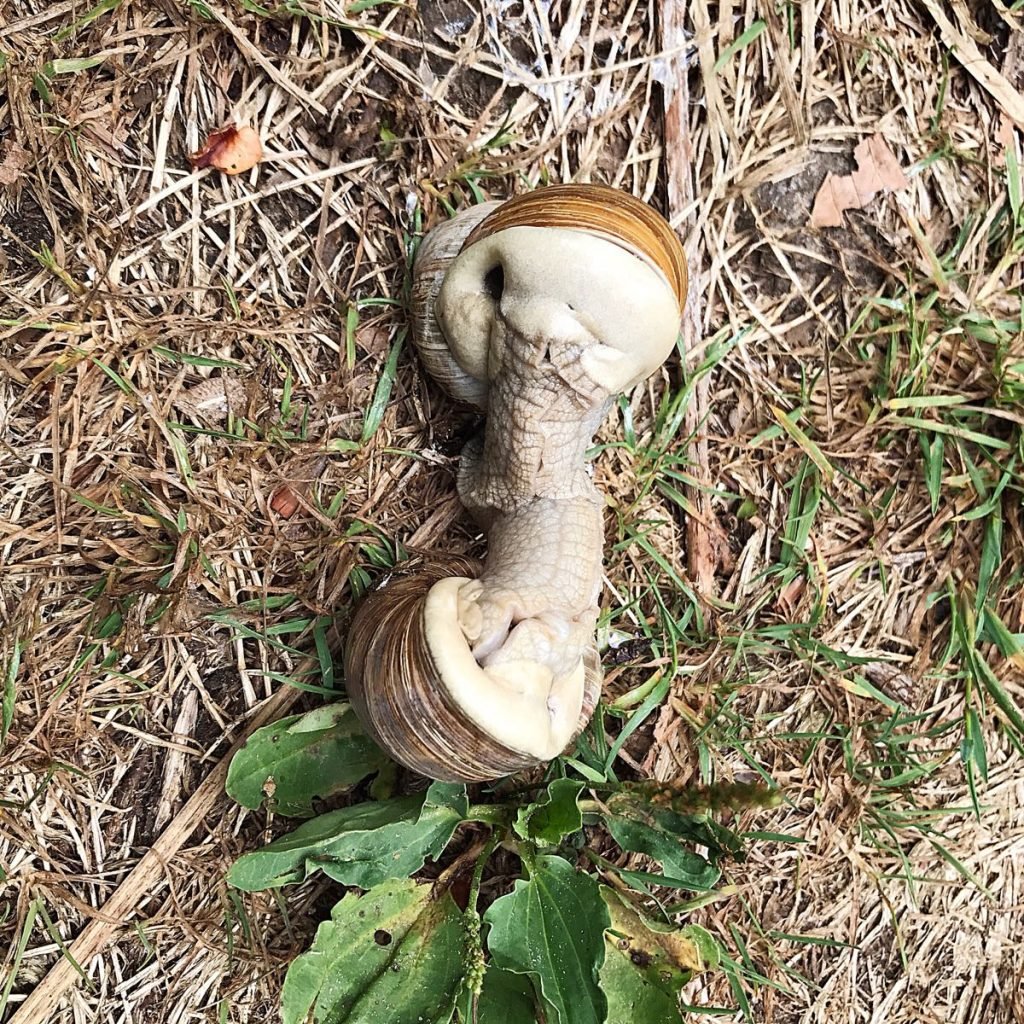
Mollusc Mucus
Snail mucin helps them to keep moist preventing dehydration. The mucin helps also to protect the sensitive soft foot as it glides along surfaces. Additionally it helps it to stick to different surfaces. It is secreted by glands under the snail’s mouth.

Beauty & the Bebbux
Snail slime is a complex mix of glycol is acids, protein, and elastin that protects snail skin from damage, infection and UV rays.
It is reputedly claimed to have bioactive properties, including the stimulation of collagen, increased ability to hold water and topical wound healing.
The unfortunate thing about snail filtrate is though that to obtain it snails are ‘mechanically stressed’ to encourage secretion. It is then filtered multiple times for purity and then packaged. [8]

Medical Marvels of Molluscs
In fact the value of snails and slugs for humans shouldn’t be underestimated. Scientists have found that slug slime can stick to wet surfaces, quite unlike other glues that require a dry surface. They have simulated the molecular structure of slug slime creating a glue that has successfully repaired a hole in a pig’s heart that was wet with blood.
The glue is flexible enough to cope with stretching and is biodegradable, which could make it useful in the future to replace staples or stitches which can cause scarring. [9]

Snails and slugs have been used for a variety of medical treatments in the past. In Italy, the common garden slug is sometimes swallowed whole to treat gastritis or stomach ulcers. In the USA instead of swallowing whole a “slug syrup” can be used to treat ulcers, bronchitis, and asthma. Slugs can also be rubbed on your skin to remove warts.
Researchers are also looking into using snail slime as a bone cement to aid in bone healing. Snails when they retreat into their shells to aestivate seal the entrance to their shells with slime which dries up and hardens quickly. This protective covering is known as an epiphragm.
Snail slime also contains local anaesthetic properties and so live slugs have been used to treat toothaches. [10]
The potential of snails is quite astounding and for this reason the quiet humble snail needs more recognition. Next time you get out the snail pellets remember just how incredible these little creatures are!

The Snail Whisperer
Dr John Stanisic is a biodiversity scientist and researcher in Australia who is the country’s foremost expert on Australian land snails. He has published numerous scientific papers and articles on land snails and is particularly interested in their association with rainforest and limestone habitats – these islands of refuge that often keep snails restricted in their distribution.
His self-proclaimed title as the ‘Snail Whisperer’ is well deserved. He has done the most to popularise this much aligned group of invertebrates and he hopes to create greater awareness and recognition of the contribution and well-being to human kind they provide.
His website www.factsaboutsnails.com says that there is estimated to be over 700 species of land snail in Australian museum collections waiting to be identified. There are estimated to be about 3,000 species of land snails in Australia. Additionally, unlike the common garden snail, most of these native snails don’t eat vegetation but fungi, algae and leaf litter, which goes to show you shouldn’t always judge a bebbux by its cover. [11]
Dr Stanisic has over the years discovered, described and named many new species. Probably the most interestingly named one was of an extremely rare tree snail found in the mountainous regions of north Queensland’s wet tropics. It was named in honour of the late crocodile hunter, Steve Irwin. Dr Stanisic named it Crikey steveirwini he said because this colourful snail with “swirling bands of creamy yellow, orange-brown and chocolate” gave the shell an overall khaki appearance and so he drew the immediate connection with the Crocodile Hunter. [12]

Unassnailable
The fact that this dedicated scientist is still discovering and naming land snail species in Australia only shows how their distribution can be very limited and how vital it is to protect these snail islands.
Snails move slowly, they require specific habitats, especially those that live in limestone outcrops or rainforests. These places become their refuge and at the same time limits their movements making them unassailable fortresses that keeps them from escaping and spreading out.
Snail islands are a treasure trove of biodiversity and by preserving these habitats we may just be saving a snail that is still to be discovered that may provide the missing link to medical discoveries on human ageing.
Island Hoping
As I pen these words I think about the last day that I spent in Malta before coming home to Australia. On the morning of the day I had to finally leave Malta, after almost three magical weeks exploring the natural and human history of Malta, rediscovering and reconnecting with people and stories of my past, I visited my uncle and aunt. I hadn’t been in their little garden, enclosed by high walls, for over a quarter century. This closed garden with mature orange and fig trees, and a little vegetable and herb patch, was like a refuge that is fast disappearing in Malta.
Strewn on the surface of the soil like white sun bleached bones, were the shells of dozens of native truncated snail shells. Here was an island that was a refuge to wildlife that was fast disappearing with the frantic onslaught of development. Fields and habitat are disappearing and the culture and values are transformed by greed and speculation.
The snails hemmed in by the high garden walls were a valuable connection with the past and Malta’s fragile and unique nature. I asked my uncle why they were all dead. He said that they were eating his vegetable seedlings so he killed them. Little did he know what gems he had preserved for so long, and what had truly been lost.
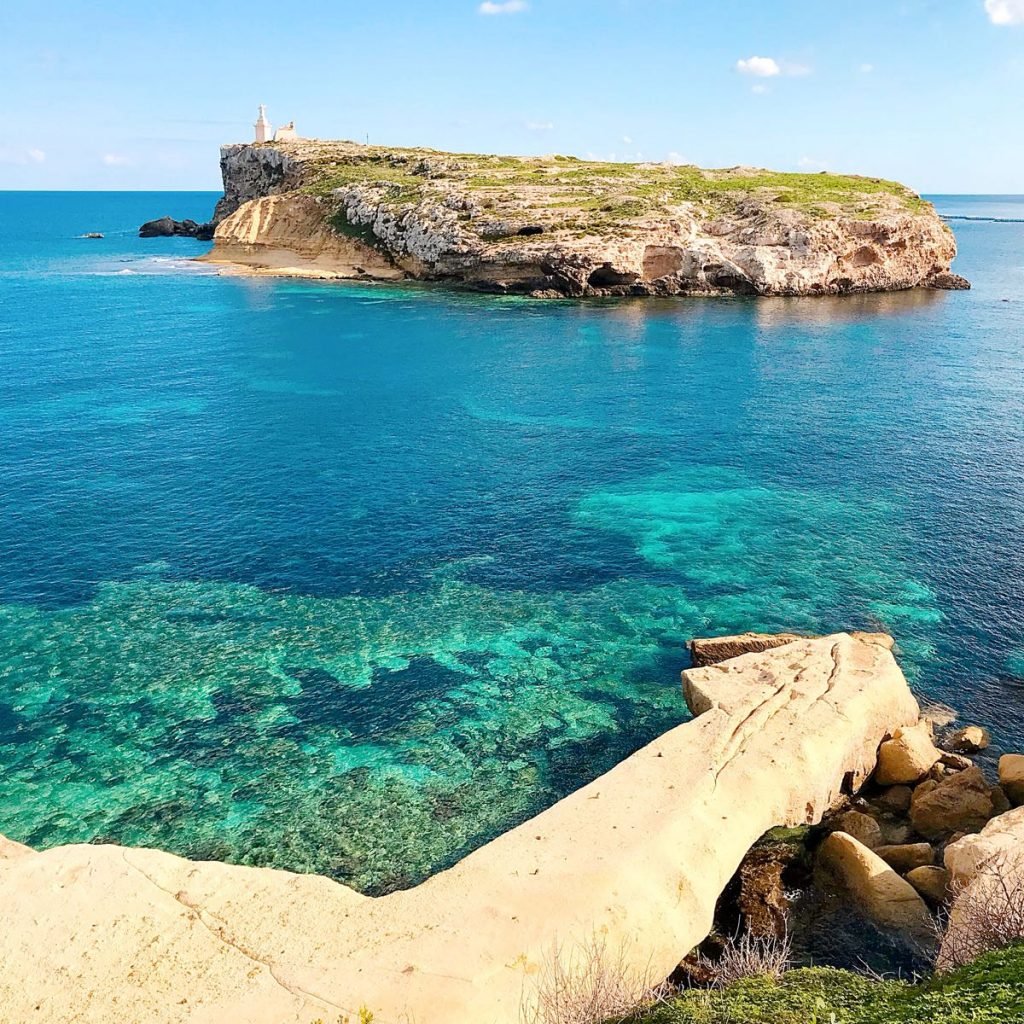
Snaislands
Throughout Malta there are little islands, unique places that have held out against the onslaught of change. There are the neglected areas, the abandoned quarries that have been reclaimed by trees and wildlife, country roads with rubble walls and wildflower studded and carob tree lined verges. There is still room for self-discovery in this island. To marvel about snail islands and to delve deeper into their mysteries – as long as we allow room in our world for these quiet unassuming and particular creatures to thrive.
Lost Worlds Within
Snaislands are more than islands where unique snails survive. They are lost worlds that may some day teach us the secrets to long life.
They are places in our own lives where we can find refuge from a fast paced world. They are cool, dark, quiet and inviting places. They are places in our heart where we can slow down and get in tune with our surroundings, our bodies, our sensuality. Places where we can notice the little things, where time can stand still in our presence.

Goddesses live on snail islands. Whether they be atop a tepui in South America, the table-topped islet of Filfla, rocky limestone outcrops in Malaysia or Australia, or that place in your heart. Snails can provide a way to look at our lives, to slow down, to discover our eternal youthful soul.
The humble snail has a lot to teach us. The ancients knew about the secrets that they held within them for youthfulness and long life, which we are yet to truly rediscover and unlock these great mysteries. Even something as small and insignificant a creature it may seem as a snail teaches the value of preserving all creatures. Even a simple snail can become our teachers and in some ways our saviours. These goddesses can teach us to slow down, sit quietly and connect to our own inner goddess.
Bibliography:
1. http://www.iucnredlist.org/details/170833/0
2. http://www.iucnredlist.org/details/11205/0
3. https://news.mongabay.com/2016/06/cement-company-may-have-caused-global-extinction-of-3-snail-species-in-malaysia/
4. https://en.m.wikipedia.org/wiki/Tepui
5. https://exemplore.com/spirit-animals/Snail-and-Slug-Symbolism-and-Spirit-Guides
6. http://www.myrine.at/Malta/mobilIndex.html
7. http://www.couriermail.com.au/news/queensland/science-slugs-it-out-with-ageing-process/news-story/0b054047129db8544f1997ce24ce46b8
8. https://shesaid.com/3-totally-weird-anti-aging-treatments-really-work/
9. https://www.reuters.com/article/us-health-slugs-glue/slug-slime-inspires-new-kind-of-surgical-glue-idUSKBN1AC2VX
10. http://www.worldwidewounds.com/2013/July/Thomas/slug-steve-thomas.html
11. Https”//www.factsaboutsnails.com
12. http://www.abc.net.au/news/2009-11-13/crikey-snail-named-after-steve-irwin/1141288
Image Credits:
1. All images © David Cuschieri 2017 unless otherwise stated.
2. Image of Lampedusa used under Wiki Creative Commons
Date: 27 December 2002
Source: http://www.flickr.com/photos/lucasiragusa/5254484262/in/photostream/
Uploaded: by MrPanyGoff
Author: Luca Siragusa

